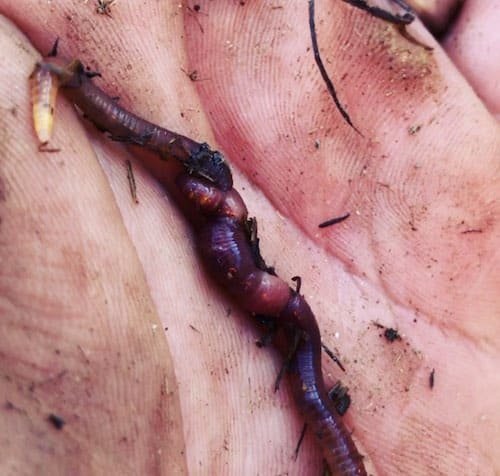Discover Lake Hickory Bait: Reliable Supplies for Every Fishing Excursion
Discover Lake Hickory Bait: Reliable Supplies for Every Fishing Excursion
Blog Article
Open the Secrets of Red Wigglers: Your Overview to Composting Success
The assimilation of red wigglers right into composting practices provides a considerable chance for boosting soil health and advertising sustainability. Understanding their demands and behaviors is vital for optimizing their capacity, from establishing up an ideal worm bin to feeding them the right materials.

What Are Red Wigglers?
(Lake Hickory Bait)Red wigglers, scientifically referred to as Eisenia fetida, are a types of earthworm primarily made use of in composting because of their amazing capability to decay organic matter successfully. These worms are identified by their reddish-brown pigmentation and a fractional body, typically gauging between 3 to 4 inches in size. Unlike various other earthworm varieties, red wigglers prosper in abundant, organic environments, making them excellent for vermicomposting systems.
Indigenous to The United States And copyright, they are typically discovered in rotting fallen leaves and compost stacks, where they play a critical duty in nutrient recycling. Their adaptation to residing in a damp, cardiovascular atmosphere enables them to consume huge quantities of natural waste, simplifying right into nutrient-rich spreadings that boost soil health.
Red wigglers duplicate quickly, with a solitary worm with the ability of producing numerous cocoons weekly, each having several hatchlings. This fast reproduction price contributes to their performance in composting procedures. They prefer temperatures between 60 ° F and 80 ° F, and their task level increases substantially within this array, more aiding in the disintegration process. Recognizing the biology and actions of red wigglers is essential for optimizing their capacity in composting applications.
Benefits of Using Red Wigglers
Harnessing the power of red wigglers in composting uses numerous advantages that improve dirt health and promote lasting waste monitoring. These impressive organisms effectively damage down raw material, transforming cooking area scraps and yard waste right into nutrient-rich vermicompost. This completed product is exceptionally useful for plant growth, as it improves dirt framework, boosts dampness retention, and enhances vitamins and mineral availability.

(Red Wiggler Express)In addition, the existence of red wigglers in your composting system can increase the composting procedure, generating high-quality compost in a fraction of the moment contrasted to typical approaches. The spreadings created by these worms are likewise including beneficial bacteria that better enhance the dirt environment.
Setting Up Your Worm Bin
Developing an effective worm container is an uncomplicated process that can dramatically enhance your composting efforts. Worm containers can be made from plastic storage bins, wood boxes, or commercially offered worm bins.
Following, prepare the bed linens material, which works as the worms' environment. A mix of shredded paper, cardboard, and coconut coir functions well, offering a comfortable setting for the worms. Aim for a bedding depth of about 4-6 inches. Dampen the bed linen lightly, ensuring it looks like a damp sponge without excess water pooling near the bottom.

Feeding Your Red Wigglers
To ensure the wellness and performance of your red wigglers, it is necessary to offer them with a balanced diet plan that satisfies their dietary needs. Red wigglers prosper on a varied selection of organic materials, which not only provide necessary nutrients yet additionally advertise efficient composting.
Start by including kitchen area scraps such as vegetable peels, fruit cores, and coffee premises. Prevent citrus fruits, onions, and garlic, as these can be detrimental to worm health and wellness. Furthermore, present shredded paper, cardboard, and dry fallen leaves to develop a well-aerated setting.
Feeding frequency should be kept track of; typically, worms can eat half their body weight in food weekly. It is critical to avoid overfeeding, as excess food can result in undesirable smells and draw in pests. A great practice is to add food in percentages, allowing worms to refine it prior to introducing more.
Keeping moisture degrees is also important; the bed linens should be damp yet not soaked. Lastly, make sure to regularly check the temperature and pH degrees of the bin to ensure an optimal atmosphere for your red wigglers, inevitably enhancing their composting performance.
Harvesting and Using Compost
An effective composting procedure with red wigglers culminates in the rich, dark compost understood as vermicompost, which can significantly enhance soil health and plant growth. Harvesting this nutrient-dense material typically takes place every three to 6 months, depending upon the dimension of your system and the amount of raw material being refined.
To gather, carefully separate the garden compost from Read Full Report the worms and any undecomposed materials. One reliable approach includes relocating the materials of the bin away and including fresh bedding and food to the void, urging the worms to migrate. After a couple of days, the garden compost can be collected from the contrary side.
It is important to use vermicompost appropriately to optimize its benefits. By including vermicompost into your horticulture routine, you not just reuse natural waste but also create a thriving community that sustains sustainable gardening methods.
Conclusion
In summary, red wigglers serve as remarkable allies in composting initiatives, transforming natural waste right into nutrient-rich vermicompost. By recognizing the optimal problems for their habitat, feeding demands, and garden compost harvesting techniques, garden enthusiasts can enhance soil health and promote plant vitality.
Report this page